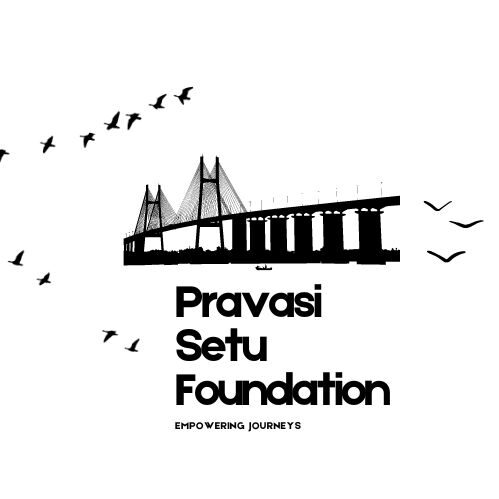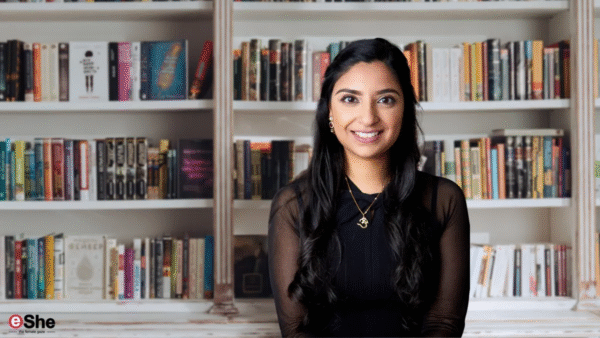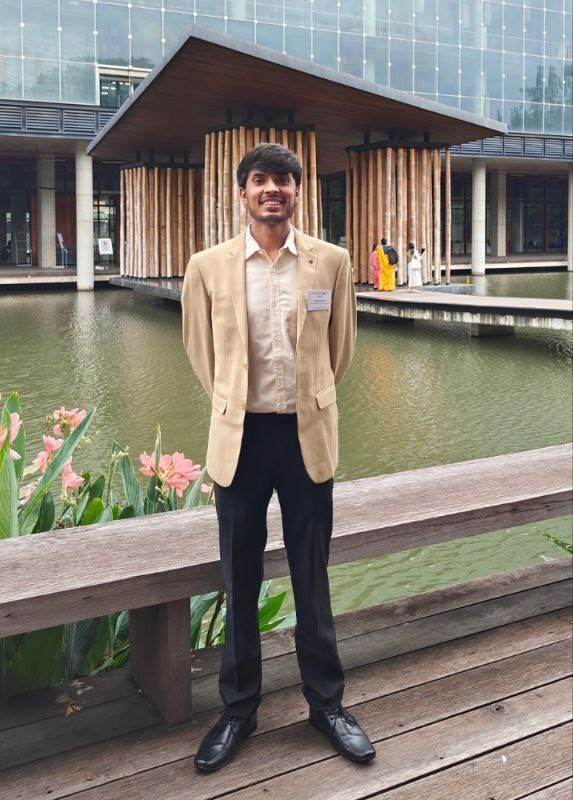In this edition of Pravasi Pulse, we are honored to feature Mahesvari Autar, a dynamic cultural leader whose work bridges continents, histories, and generations. With deep roots in the Sarnami-Hindustani community—descendants of indentured laborers brought to Suriname during Dutch and British colonial rule—Mahesvari’s personal story is a testament to resilience, heritage, and the power of cultural expression. A passionate advocate for the Indian Diaspora, particularly those with Surinamese ties, Mahesvari has curated over 100 events, bringing international artists and thinkers to the Netherlands while fostering cross-cultural dialogue. Through her platform DesiYUP, she launched the groundbreaking Endless India Festival in 2023, commemorating 150 years of Hindustani immigration and forging partnerships with leading institutions. Beyond event curation, Mahesvari is a creative visionary—crafting theatre productions that blend classical Indian arts with contemporary themes and penning the beloved children’s book Radha’s First Concert. Her expertise as a cultural liaison and speaker ensures that the voices of the Hindu and Indian Diaspora communities are amplified in public discourse. Recognized as the first runner-up for Rotterdam Woman of the Year 2025 (Arts & Culture) and a finalist for Rotterdam Businesswoman of the Year 2019, Mahesvari’s dedication to preserving heritage while shaping inclusive cultural spaces makes her a true force of inspiration. Join us as we delve into her journey, her mission, and her vision for a more connected and celebrated Diaspora.
How have your Sarnami Hindustani and Indian roots influenced your identity and career?
Music and spirituality are deeply intertwined in both Sarnami Hindustani and Indian traditions, which has profoundly impacted my life. I grew up surrounded by bhajans and folk songs (Baithak Gana), but my mother’s approach to studies has ignited my entrepreneurial spirit. It’s because she insisted that I should learn Hindi as an additional language to ‘Dutch, German, France, and Spanish’. My ability to understand and speak Hindi became a powerful tool for me to set up my cultural platform, DesiYUP, in 2011. Through DesiYUP, I’m able to bring the Arts & Culture of India to the Netherlands.
What inspired you to pursue a career in journalism, and how did your early experiences shape your professional journey?
I’ve always been drawn to stories hearing them, telling them, and understanding their power to connect us. However, it was my deep sense of curiosity about the world and a desire to explore different cultures and perspectives that were the driving forces behind my pursuit of journalism. My early experiences in the field were incredibly formative. I learned how to research effectively, navigate complex situations, and communicate clearly and concisely. These experiences instilled in me a strong work ethic and a commitment to uncovering the truth, i.e. a certain perspective, which continues to guide me in everything I do, from cultural programming to writing children’s books.
What do you believe are the most significant contributions of the Indian Diaspora to the cultural landscape of the Netherlands?
Beyond the artistic and culinary contributions, the Indian diaspora has built strong and vibrant communities across the Netherlands. These communities have not only provided a sense of belonging for people of Indian origin but have also contributed to the social and economic development of the country. The entrepreneurial spirit is simply amazing; the number of restaurants that are now being opened, or various home-made products that are being developed are just two examples to credit the entrepreneurial mindset of the Indians. This creates value for the Dutch community and let’s not forget economy.
How do you think the experiences of the Indian Diaspora have evolved over the generations in the Netherlands?
The experiences of the Indian diaspora in the Netherlands have undergone a significant transformation across generations. The first generation often focused on establishing themselves, navigating a new culture, and maintaining their connection to their homeland. What I do notice is the language barrier; the first generation was very comfortable speaking in English rather than communicating in Dutch. While the Sarnami-Hindustani community is raised speaking Dutch. Consequently, the first generation community hardly mingled. The real change that I could notice is when PM Narendra Modi came to visit the Netherlands in 2017 and opened his speech by acknowledging the Sarnami Hindustani community for preserving their culture, language for (now) 151 years. His speech did cause a relationship shift between the first-generation Indians and the Sarnami Hindustani community. The second-generation Indians, born and raised in the Netherlands and the Indian expats that came to live here in the last let’s say 10 to 15 years have brought a lot of change in terms of socially and economically. There is an emergence of sub Indian communities. Every state of India is now represented in the Netherlands. I believe this is also a challenge for the community as well to navigate multiple identities, balancing their Indian heritage and integrating in the Dutch society. To give you an example, when I bring an artists and I know he is has roots in Bengaal, I know that I will attract a primarily Bengali audience to this concert who are also keen to hear Indian classical music live. So, as a cultural platform, I cannot focus on one particular sub-community; I always have to ensure that my programming is diverse enough to attract music lovers from all parts of India.
Can you elaborate on how DesiYUP has helped bridge cultural gaps and introduce the Dutch audience to the richness of Indian music and arts?
Beyond presenting performances, DesiYUP strives to build a community around South Asian arts and culture. We create spaces where people from different backgrounds can come together, share experiences, and learn from each other. Our events are not just about watching a performance; they’re about fostering dialogue and understanding. We believe that by creating these meaningful connections, we can break down cultural barriers and promote a more inclusive and harmonious 23 society. We do this by collaborating with both established and emerging artists from different backgrounds; we create unique and innovative performances that resonate with diverse audiences and promote intercultural dialogue. We don’t just present the art; we provide the context. DesiYUP emphasizes education and understanding. We offer program notes, talks, and workshops that help audiences delve deeper into the cultural significance of Indian Arts & Culture. This approach is crucial in bridging cultural gaps, as it allows people to appreciate art on a more profound level. By providing this context, we empower audiences to connect with the music, literature and arts in a meaningful way, regardless of their background.
What challenges have you faced in promoting Indian culture through DesiYUP, and how have you overcome them?
In the beginning, building trust and credibility was a significant hurdle. As a relatively new organization, it took time to establish ourselves within the Dutch cultural landscape. We overcame this by consistently delivering high-quality programming, building strong relationships with artists and cultural institutions, and demonstrating our commitment to our mission. Through perseverance and a genuine passion for what we do, we’ve been able to build a loyal following and establish DesiYUP as a respected international platform for South Asian arts and culture. To ensure that we collaborate with the right venue, we had to ensure a diverse audience who would be interested in our program. That has been our key challenge. We want to connect with people from all backgrounds, not just those who are already familiar with Indian culture. Also, we noticed that Indians familiar with classical art forms have the tendency not to appreciate the art forms by willing to pay for concerts. They do when commercially interested parties are involved, for example, a Diljit Dosanjh, Shreya Ghosal or well known comedians such as Russel Peters. But spending time and money on new emerging Indian talents has so far not been encouraged so far. Hence, our organization cannot depend solely on the Indian community. Our third challenge is building a strong and dedicated team of volunteers and supporters who are passionate about our mission. Who are not just part of DesiYUP for the events or access to our network, but who truly believe in connecting with people through arts and culture. Who have the same values and strong work ethics.
How has your work with the Indian Diaspora influenced your approach to journalism and media production?
My work with the Indian diaspora has instilled in me a deep sense of cultural sensitivity commitment to and a fostering intercultural dialogue. I’ve learned the importance of understanding different cultural contexts and perspectives, which is crucial in journalism and media production. It’s not just about translating words; it’s about conveying cultural meanings and ensuring that messages are understood in their intended context. This experience has made me a more thoughtful and responsible communicator, always striving to bridge cultural gaps and promote understanding.
What has been your most memorable project with the Embassy of India in the Netherlands, and why?
I’ve been fortunate to collaborate with the Embassy of India on several enriching projects over the years. Even before I founded DesiYUP and was working for the national broadcast channel OHM. Every project that I did for the embassy or where they supported me was of absolute value. It’s pretty hard for me to choose, but I guess when I was invited by the Embassy to travel to India for the Pravasi Bharatiya Divas was a memorable occasion to see India from up close. Another occasion was when I got introduced to PM Modi in a Meet & Greet session, where Ambassador Venu Rajamony informed him about the work of DesiYUP. And thirdly, when I was asked to be the MC for the community event ofPresident Ram Nath Kovind two years back. These are all wonderful memories. What I value most about our relationship is their commitment to promoting Indian culture in the Netherlands and their willingness to support organizations like DesiYUP. Each project has been a valuable learning experience, contributing to our shared goal of fostering cultural exchange and understanding.
How do you envision the future of Indian cultural promotion in the Netherlands and DesiYUP’s role in it?
I believe the future of Indian cultural promotion lies in strong collaborations and meaningful cross-cultural exchange. We need to work together with other cultural institutions, artists from different backgrounds, and commercial organizations as promoters/funders to create truly enriching experiences. DesiYUP will continue to be a catalyst for these collaborations, fostering partnerships that bring together diverse perspectives and create innovative projects that explore the intersection of Indian culture with other art forms and cultural traditions. This collaborative 24 approach will not only expand the reach of Indian culture but also contribute to a more vibrant and interconnected cultural landscape in the Netherlands.
What impact do you hope your work will have on the next generation of the Indian Diaspora in the Netherlands?
I hope my work will inspire the next generation to embrace their Indian heritage with pride. I want them to feel a strong connection to their roots, to understand the richness and beauty of their cultural traditions, and to feel empowered to express their identity in their own unique way. It’s about giving them the tools and resources they need to navigate their dual identities and to feel a sense of belonging within both the Dutch and Indian cultural landscapes.
How do you measure the success of your efforts in promoting meaningful Indian music and culture?
For me, success isn’t just about numbers; it’s about the quality of engagement and the impact we have on our audience. We look at several factors: audience attendance, of course, but more importantly, we pay close attention to audience feedback. We value the conversations we have with people after performances, the messages we receive online, and the reviews and testimonials we gather from artists and our partners in the cultural sector. When people tell us that they’ve been moved by a performance, that they’ve learned something new, or that they’ve felt a deeper connection to Indian culture, that’s a true measure of success.



Leave a Reply